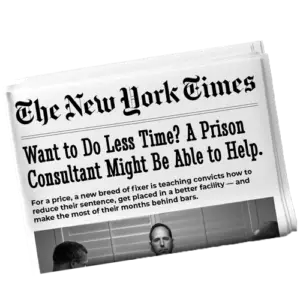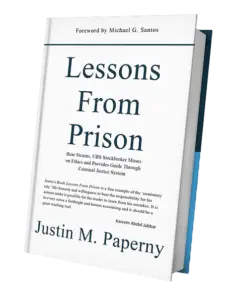A few minutes into Tuesday’s webinar, I asked Marcus a direct question: “You’ve been sentenced to 15 months in federal prison. What does success look like to you?”
He paused, then said, “Getting home early. Restoring trust with my family. Showing people I’m not who they think I was.”
I pushed: “How are you going to do that?”
Marcus said he was working on a release plan, drafting it with help from PrisonProfessors.org. He said he wanted to document his progress in custody, show up for his family, and prove to the judge and case manager that he is a candidate for more liberty.
That answer sounds good. But without documentation, it’s just talk.
From Words to Record: What Credibility Looks Like
Scotty told us he would write every day. We said: don’t say it unless you mean it. He meant it. He wrote every single day. That documentation became part of his release plan. He qualified for RDAP. He served 10 months on a 24-month sentence. He returned home and joined our team.
It’s not magic. It’s documentation. And documentation works because it creates a timeline. Not a timeline of excuses or promises—a timeline of deliverables.
Same with Dr. Patrick Haydell. Before reporting to Oakdale Federal Prison Camp, he completed a release plan. Then he sat for a full-length interview with Michael Santos. That content is now part of the medical ethics curriculum distributed across prison systems nationwide. He continues to write and post updates on his Prison ProfessorsTalent profile.
He’s documenting treatment goals, character development, career rebuilding efforts, and contributions to others.
He doesn’t need to beg for consideration. He’s created a searchable, verifiable record.
Why Most Release Plans Fall Apart
Plenty of people say they’re creating a plan. They say they’re going to use their time inside federal prison camps like Yankton or Cumberland wisely.
But here’s what happens: they surrender. They get distracted. They spend their time watching ESPN or pacing the track. Then they realize they’re six months in and have nothing to show their case manager.
Some start writing. Others panic and fake something. The problem? A release plan built six months too late doesn’t reflect consistency and it is clear the person is trying to play catch up.
During the webinar, attorney Nicholas Kaizer shared a specific example. Our client was sentenced to 30 months. He surrendered to Otisville Federal Prison Camp in November. By early summer—barely six months later—he was approved for the halfway house.
Why? Because he had a fully executed release plan. A work history lined up. Stakeholder letters on file. Volunteer hours logged. Everything was backed by dates and results. Not intentions.
Some say he got lucky. I’d say he gave luck a reason to show up.
What Stakeholders at Federal Prison Camps Are Looking For
If you’re at a federal prison camp or heading to one, your stakeholders include:
- Your sentencing judge
- The case manager at your assigned BOP facility
- The unit team (who inputs your case notes into your central file)
- Probation officers post-release
- BOP halfway house coordinators
- RDAP screeners and drug coordinators
What are they looking for?
- Written proof of program participation
- Treatment goals backed by a substance abuse history (if relevant)
- Community service documented in hours and impact
- Character reference letters tied to specific, verifiable conduct
- A narrative that tracks consistently from pre-sentence to in-prison conduct
- Timeline entries with dates, names, and outcomes
They are not looking for happy talk or cliches.
The Central File Isn’t Just a Folder—It’s Your Case History
During the webinar, I described how I wrote dozens of letters from Taft Federal Prison Camp to my probation officer. When I met him at the halfway house, he said, “I got your letters.” He didn’t read them all. But they were in my central file. And they helped ensure I could build by new career and travel the country lecturing on ethics and white collar crime. Later, he approved a visit to The FBI Academy to speak.
The plan I built in prison set up more liberty and a new life on the other side.
If you’re at a federal prison camp and you want to apply for early transfer, RDAP, or direct home confinement under the new BOP directive, you’ll need that central file to speak for you.
It can’t speak if there’s nothing in it.
Justin Paperny
P.S. During the webinar I referenced a number of resources we give away, including our probation report course, RDAP course and our course on character reference letters.



